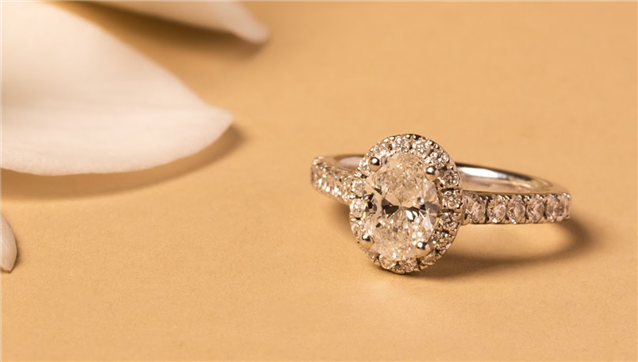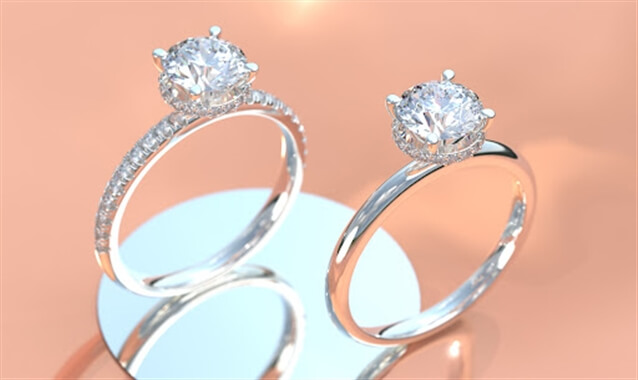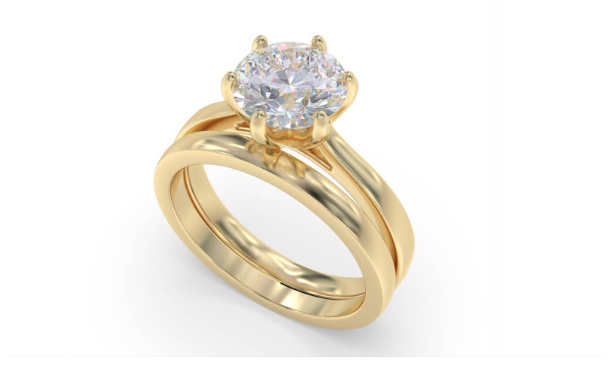The anatomy of a Diamond Ring
Knowing the different parts of a ring is not essential to finding your perfect piece of jewellery, but it can really help you during your search.
Knowing the different parts of a ring is not essential to finding your perfect piece of jewellery, but it can really help you during your search.
There is so much choice available, especially when buying diamond rings, that it can often be a bit overwhelming at first. Knowing which parts of the ring you like and which you don’t really help when discussing your preferences with a jeweller. This is particularly important if you are designing your own engagement ring.
Here we’ll be exploring the anatomy of a diamond ring. The pieces that come together to make the perfect ring differ depending on the style and stone used. If you don’t yet know your shank from your setting then read on to find out all about ring anatomy.
Shank
The shank is the band or ‘hoop’ of the ring. There are many forms of shank, from more elaborate and ornate designs to simple and plain styles. Whilst almost always round in shape, some rings feature flat bottoms. These are particularly popular if the ring contains a large stone as they prevent it from rotating around the finger.
Setting
The setting of the ring is where the stone is held in place. It is usually found at the top and is an incredibly important feature. This is because the setting is responsible for how the stone interacts with light and determines how much of it can be seen.
Gallery
The gallery is often a part of the setting. Viewable from the side, the gallery is situated underneath the centre stone and is a great way to add elegance to the piece. They come in varying styles with some much more elaborate than others.
Shoulders
A ring’s shoulders are situated on the side and provide support for the head. They are sometimes studded with accent stones to add to the design’s overall beauty.
Prong
A prong is another element that is used to hold gemstones in place. They typically consist of 4-6 metal prongs situated on the ring’s head and hold the centre stone securely. One of the benefits of a prong setting is that they allow the stone to interact with light, making it appear larger than it really is.
Bezel
A bezel setting is a metal frame that surrounds the centre stone, either partially or fully. A bezel also provides more support than a prong and has a higher level of protection. The flipside to this is that there is less interaction with light and the stone will appear smaller. Bezels are perfect for those looking to wear a ring whilst using their hands.
Accent Stone
Accent stones are small and simple stones that are used as extra decoration. They are usually found on the shank and head of the ring. An excellent addition to most rings, accent stones add beauty and elegance to your piece.
Side Stones
Side stones are commonly found on three to five stone designs. They are smaller stones that are set on either side of the centre stone.
Halo
There are multiple types of halo but as a general rule, they are a small circle of gemstones that surround the centre stone. Their shapes, sizes and colours are subject to personal preference and whilst a single halo is most common, there is the option to add extra rows. Halos are known to add brilliance to a ring and help smaller centre stones stand out.
Pave
A pave refers to the setting being paved with multiple smaller diamonds that are held in place with tiny prongs. The resulting shank appears elegant and extravagant. There is also the option for micro-paving, this is where even smaller prongs are used for a brilliant glitter effect.
Channel
A channel, or groove, that is cut into a ring and can be used to set diamonds and other gemstones. They are alternatives to prongs and provide security with an intriguing, stylish look. Channels are a very popular choice for wedding bands and eternity rings.
If you’re looking for your perfect ring then speak to our experts and visit one of our UK stores. We have locations in Birmingham, London, Manchester, Cardiff, Leeds and Glasgow.






 Why you should choose an Oval Cut Diamond Ring
Why you should choose an Oval Cut Diamond Ring Design your own Ring with our Ring Builder
Design your own Ring with our Ring Builder A Guide to Kate Middleton’s Engagement Ring
A Guide to Kate Middleton’s Engagement Ring How to Clean Your Gold Rings at Home
How to Clean Your Gold Rings at Home